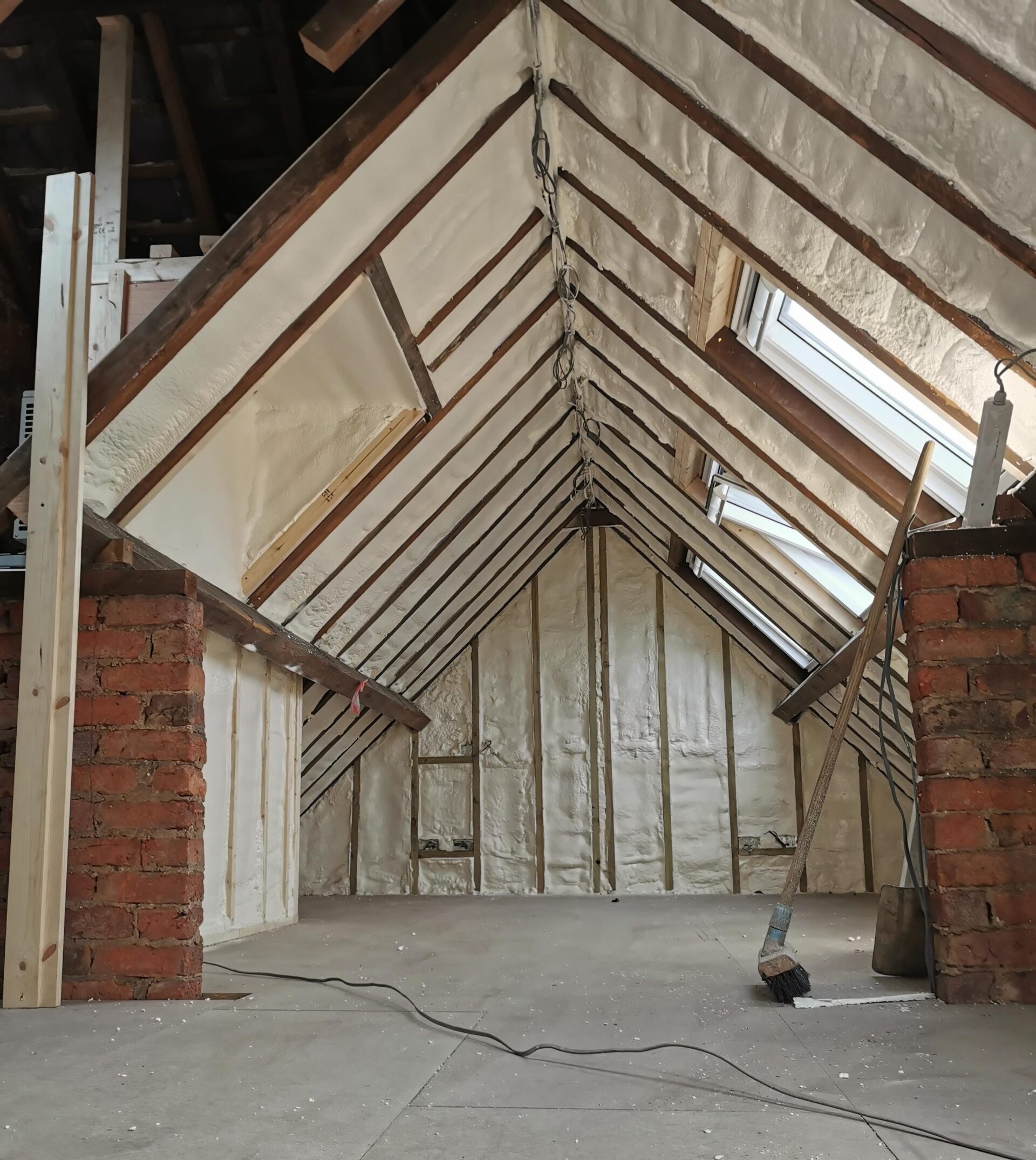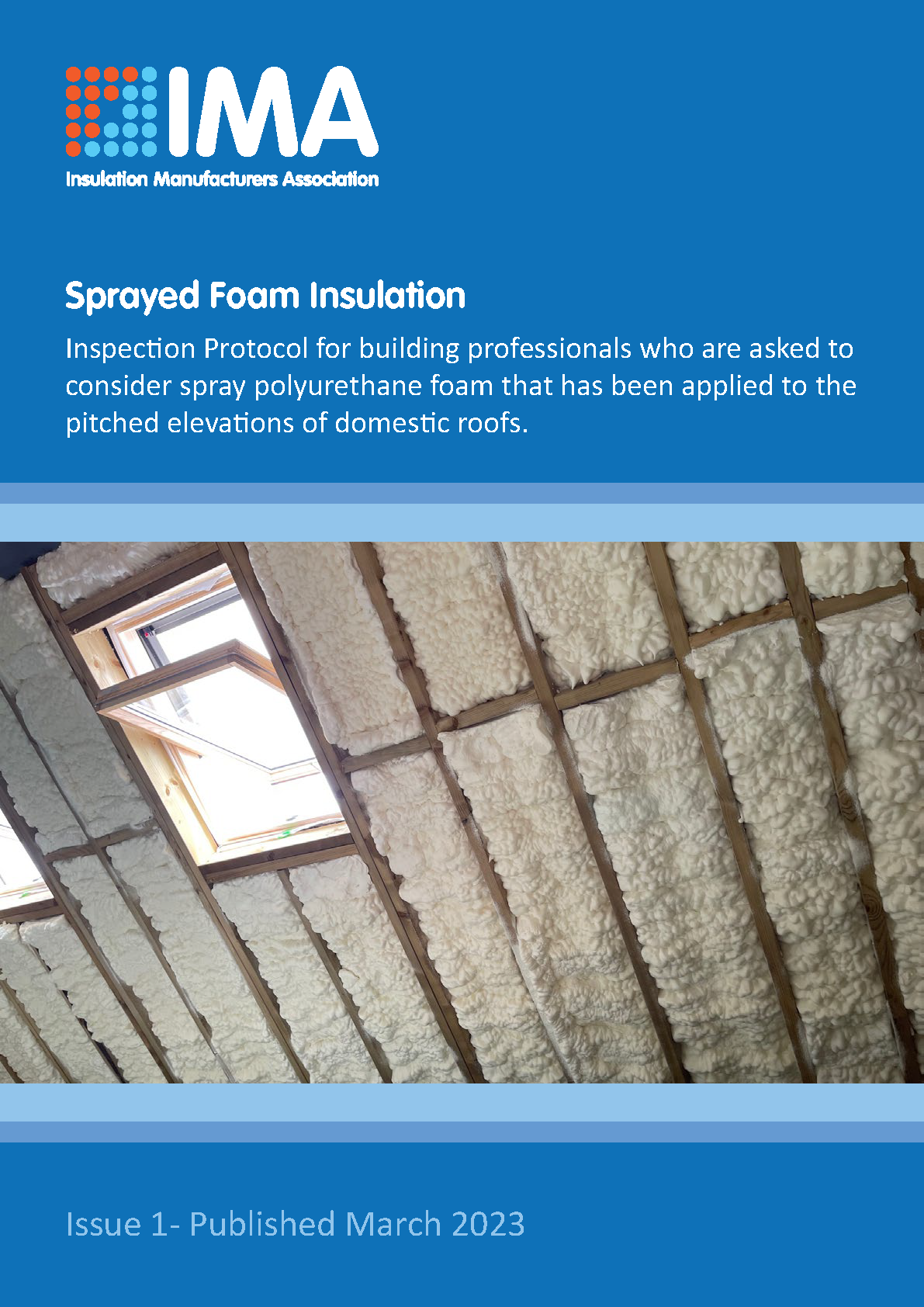When insulating the roof of a domestic building, spray foam must be installed in line with the manufacturers’ instructions and must be carried out by a registered and professional spray foam installer. IMA has developed a code of practice for installers which sets out the requirements for the procedures involved when specifying and installing spray foam
products to the inside of roofs of domestic properties.
Whilst IMA does not represent installers or contractors of spray foam, it does represent some manufacturers and distributors of spray foam. These manufacturers only ever supply to their approved contractors and we have worked with these suppliers to promote best practice and highlight the correct procedures for a spray foam installation. These procedures include pre-installation surveys and including a roof condition analysis, condensation risk analysis, product identification and supply information, as well as a post-installation homeowner pack. This information should be made available to lenders and surveyors who should always use it to support their decisions about mortgage finance.
All our spray foam members’ products are independently tested to achieve BBA or KIWA-BDA certification and installation must be carried out in-line with this certification in order to validate performance.
For anyone who has been cold-called or is considering having spray foam removed, we urge you to read this consumer guide drawn up together with Property Care Associationand other building professionals before taking any further action. You can also read our blog post about spray foam removal here.
IMA was involved in the development of a protocol to provide a framework to assist property professionals and residential surveyors undertaking non-invasive visual inspections of spray foam applications to the inside of pitched roofs (see below).


